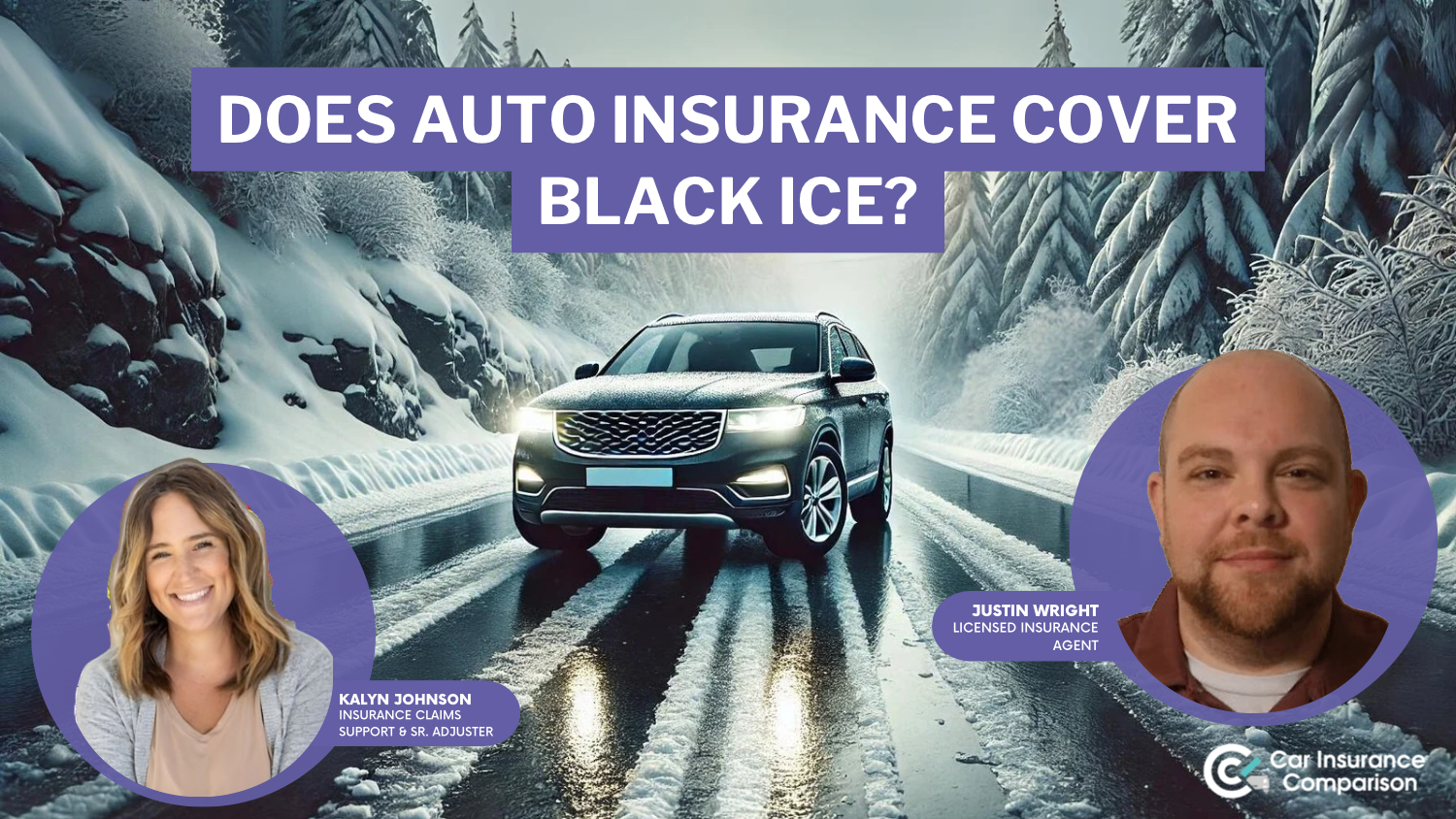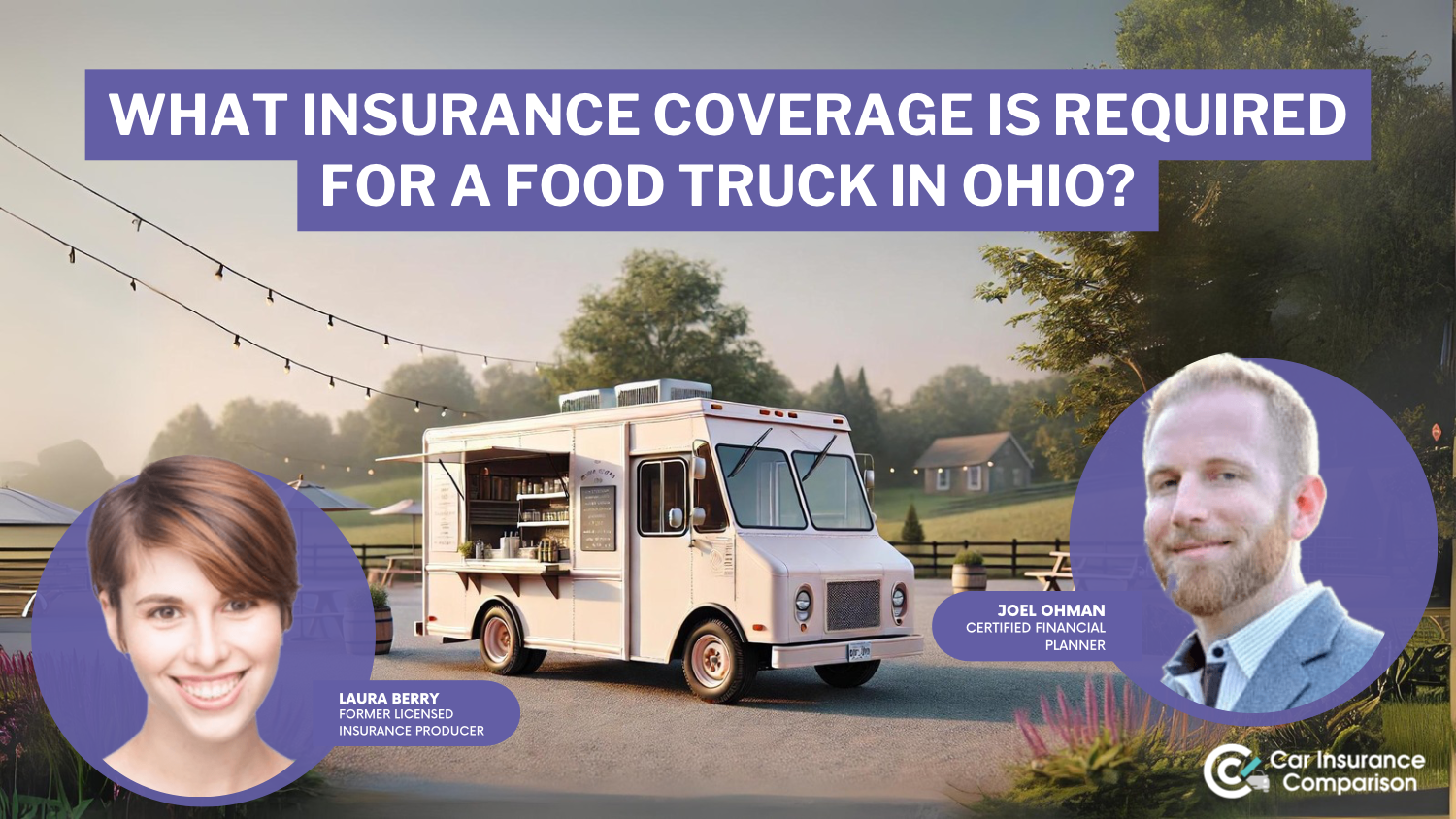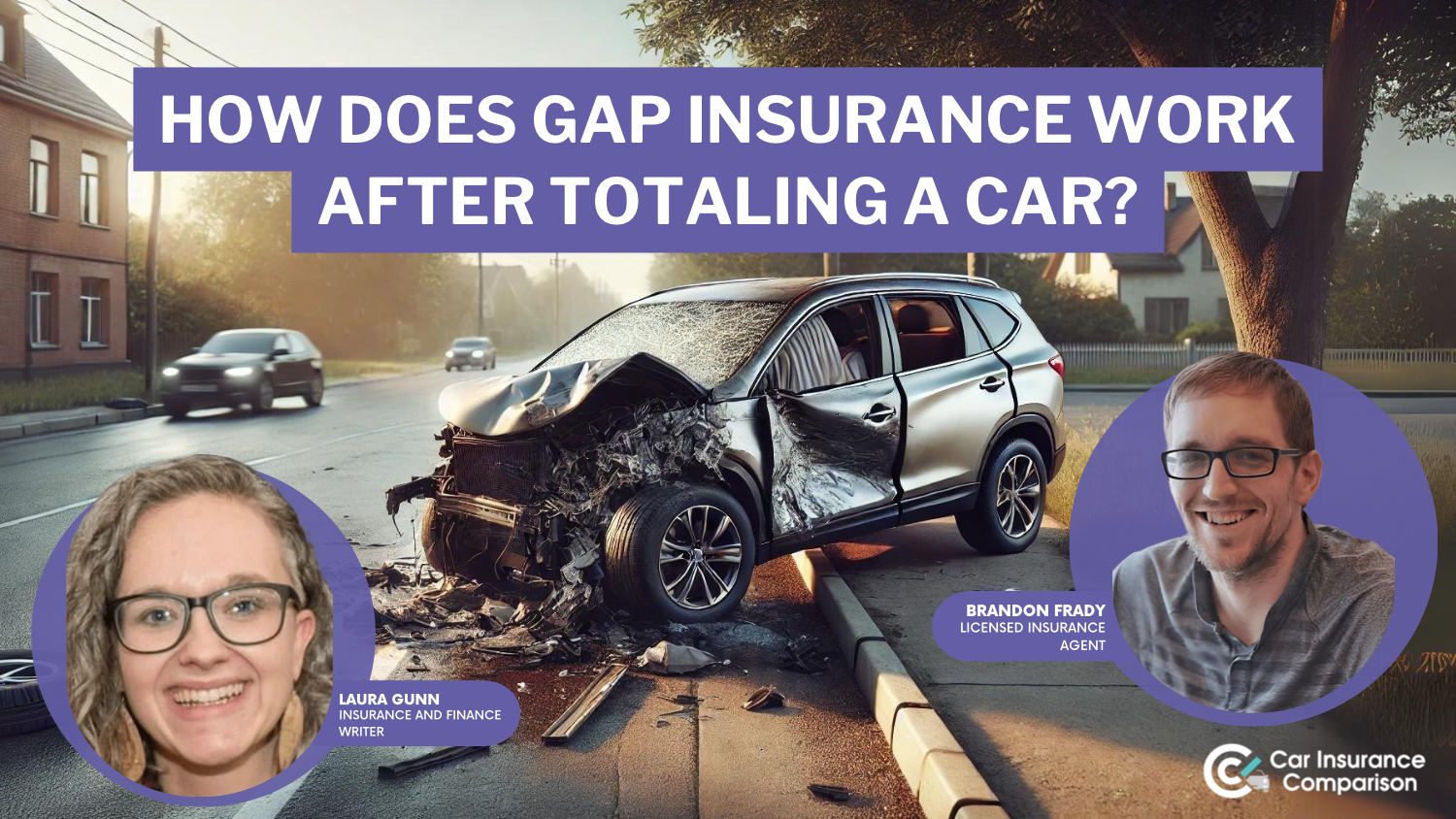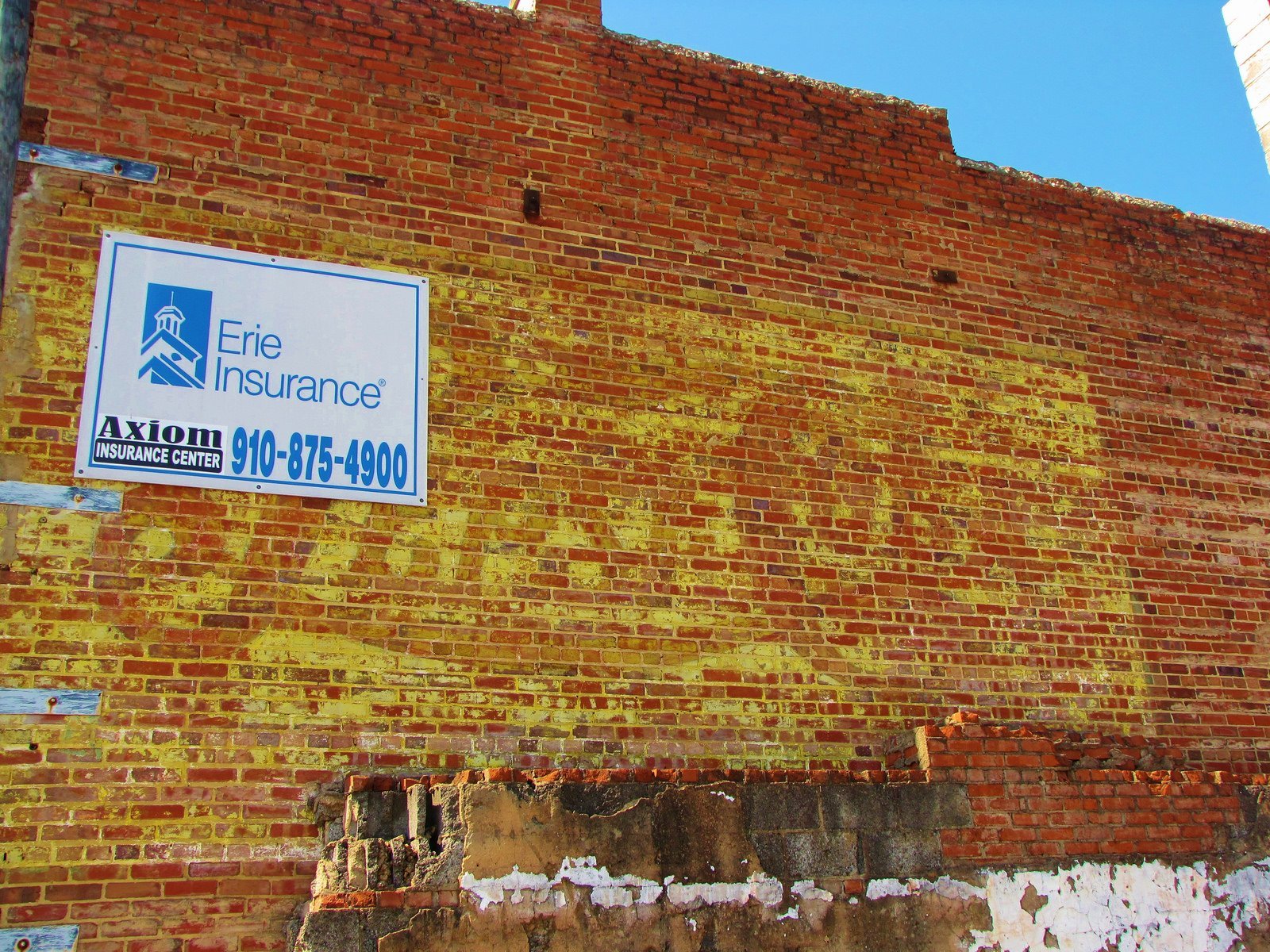Does car insurance cover black ice?
To be covered for black ice-related accidents, you'll need to buy more than just the minimum liability insurance. Read on to learn more about what types of auto insurance will cover you in an accident caused by black ice.
Read more Secured with SHA-256 Encryption





Table of Contents
Table of Contents


Insurance Claims Support & Sr. Adjuster
Kalyn grew up in an insurance family with a grandfather, aunt, and uncle leading successful careers as insurance agents. She soon found she has similar interests and followed in their footsteps. After spending about ten years working in the insurance industry as both an appraiser dispatcher and a senior property claims adjuster, she decided to combine her years of insurance experience with another...
Kalyn Johnson


Licensed Insurance Agent
Justin Wright has been a licensed insurance broker for over 9 years. After graduating from Southeastern Seminary with a Masters in Philosophy, Justin started his career as a professor, teaching Philosophy and Ethics. Later, Justin obtained both his Property & Casualty license and his Life and Health license and began working for State Farm and Allstate. In 2020, Justin began working as an i...
Justin Wright
Updated August 2025
Driving in the winter carries a specific set of risks you should be prepared for every time you sit behind the wheel. Ice, snow, wind, and freezing temperatures — all of those can affect your driving and your vehicle. The most dreaded is black ice, a thin sheet of frozen water on the road that’s nearly impossible to see.
This article will explain the basics of winter driving and insurance: what kind of policy covers damages caused by black ice, who’s at fault in ice-related accidents, and how to prevent accidents from happening in icy weather.
- Liability coverage doesn’t protect your vehicle if it gets damaged due to black ice
- Comprehensive and collision coverage will cover the damages if you hit another vehicle or an immovable object due to black ice
- Even if ice is the culprit, your insurance agency might hold you responsible for the accident
Does car insurance cover black ice-related accidents?
If you drive in winter conditions, you should keep in mind that minimum liability car insurance coverage only covers you for third-party injuries and not for property damage.
On the other hand, comprehensive car insurance coverage includes all types of damages to your vehicle caused by hitting immovable objects, storms, natural disasters, etc. Therefore it will cover vehicle damage if you lose control on the ice and crash. Collision insurance coverage also covers black ice-related accidents since it includes damages caused by a collision with another vehicle or with an immovable object.
Read more: 25 Facts About Winter Weather Car Crashes
Free Insurance Comparison
Compare Quotes From Top Companies and Save
Secured with SHA-256 Encryption
Who’s at fault in accidents caused by black ice?
The responsibility for driving safely in bad weather including winter conditions (or avoiding driving at all if the weather conditions are severe) lies on the driver. The same goes for ice. In freezing weather sitting behind the wheel is already considered risky, even if you drive carefully.
The most common causes of accidents in icy weather are:
- Driving too fast
- Not keeping enough distance between your vehicle and the car in front
- Braking suddenly
- Driving when tired, distracted, or impaired
If you skid on a sheet of ice while driving too fast for the conditions and your vehicle gets damaged, the insurance company might determine that you’re at fault. Even if you don’t get a ticket, it’s unlikely that your insurance company will declare ice as the culprit.
Does car insurance cover black ice damage if I crash into another vehicle?
If you get into an accident with another vehicle, the case will be investigated to determine the degree of fault in multi-car accidents.
If one party is determined to be at fault, their insurance will cover the damages. However, if both parties are partially at fault for not adjusting their driving to the road conditions, the insurance adjuster will determine the degree of fault for all parties.
According to the Legal Information Institute, many states, such as Tennessee and others, use a modified comparative fault system where both parties get paid damages based on their percentage of fault.
Read more: If I am in a car accident, do I call their insurance or mine?
How To Safely Drive on Icy Roads
Black ice often forms when the ice melts during the warmest part of the day, and then the temperature drops below the freezing point (usually in the evening or early morning). It’s more common in areas with fluctuating temperatures, such as on bridges or overpasses.
Black ice makes the road look wet. Therefore it’s very difficult to detect when driving. Unlike snow, ice offers no traction, so you can quickly lose control over your vehicle, even if you’re not driving fast. This calls for special caution when driving in icy weather.
Here are some tips to reduce the risk of skidding on ice and causing an accident:
- Firstly, if you do come across ice, don’t try to turn and do not hit the brakes. Doing either will cause the vehicle to slide or even spin and possibly drive off the road.
- What you should do is remember to keep your steering wheel straight and remain steady on the throttle.
- If you want to slow down, ease off the throttle slowly, and don’t brake, steer, or make any other input abruptly. Smooth and gentle movements will keep your car pointed in the right direction.
- Finally, avoid driving early in the morning or late in the evening in icy weather or sleeting rain.
If you must drive, do so very carefully and keep plenty of distance between your vehicle and the vehicle in front of you (keeping a following distance of 5-6 seconds is a good standard).
Navigating icy roads poses significant risks for drivers, particularly in regions prone to winter weather like Massachusetts, New York, Seattle, Texas, and Wisconsin. When an insured vehicle encounters black ice, the resulting accident can lead to substantial damage. Personal auto policies typically cover these incidents under comprehensive or collision coverage, depending on the specifics of the policy. Comprehensive coverage protects against damage from natural events like ice-related accidents, while collision coverage applies to crashes involving vehicles or stationary objects.
Determining fault in a black ice accident hinges on factors such as driving speed, road conditions, and driver awareness. Insurance adjusters assess these elements to establish liability, considering whether the driver exercised reasonable caution in icy conditions. For those affected by black ice incidents, filing a black ice insurance claim involves providing detailed documentation of the accident circumstances and the resulting damage. This process ensures that policyholders receive appropriate compensation for repairs or replacements necessary due to black ice-related accidents, helping them recover from unforeseen winter driving hazards.
Understanding the nuances of car insurance for snow damage and black ice scenarios underscores the importance of comprehensive coverage options. Geico collision coverage and similar policies offer financial protection against various winter-related risks, including collisions with trees, fences, and other stationary objects. Drivers navigating slippery roads are advised to review their insurance policies regularly to ensure adequate coverage for potential black ice accidents, thereby safeguarding themselves against the financial impact of unpredictable winter driving conditions.
Coverage for Accidents Caused by Black Ice
Navigating winter roads poses inherent risks, particularly in regions prone to icy conditions like Massachusetts, New York, Seattle, Texas, and Wisconsin. When encountering You may hit the fence with your car due to reduced visibility and traction, increasing the likelihood of accidents. it has reduced visibility and traction, increasing the likelihood of accidents. Car insurance policies typically cover these incidents under comprehensive or collision coverage, depending on the specifics of the policy. Comprehensive coverage protects against damage from natural events like black ice-related accidents, including collisions with trees, fences, or other stationary objects. Hitting your own car in the driveway applies to crashes involving vehicles or immovable objects due to black ice.
Understanding fault in accidents caused by black ice crashes involves evaluating factors like driving speed, road conditions, and driver awareness. Insurance adjusters assess these elements to determine liability, considering whether the driver exercised reasonable caution given the icy conditions. For individuals affected by black ice incidents, filing an insurance claim involves providing detailed documentation of the accident circumstances and resulting damage. This process ensures that policyholders receive appropriate compensation for repairs or replacements necessary due to black ice-related accidents, helping them recover from unforeseen winter driving hazards.
Drivers navigating regions prone to black ice, such as Seattle and Wisconsin, should prioritize reviewing their insurance policies regularly to confirm adequate Drivers navigating regions prone to black ice, such as Seattle and Wisconsin, should prioritize reviewing their insurance policies regularly to confirm whether car accidents due to weather conditions are covered—coverage for potential accidents caused by black ice. Geico insurance and similar policies offer financial protection against various winter-related risks, including collisions with trees or other stationary objects due to black ice. By understanding the nuances of car insurance coverage for black ice incidents, drivers can safeguard themselves against the financial impacts of unpredictable winter driving conditions and ensure peace of mind on icy roads.
Free Insurance Comparison
Compare Quotes From Top Companies and Save
Secured with SHA-256 Encryption
AAA Car Insurance in Massachusetts
AAA car insurance in Massachusetts offers various coverage options tailored to the state’s driving conditions, including winter hazards like black ice. If an insured slips on an icy patch and collides with a tree, their personal auto policy from AAA will generally provide coverage, assuming the insured has comprehensive or collision coverage. Comprehensive coverage protects against damage from natural events such as ice-related accidents, ensuring that policyholders can recover financially from unexpected incidents on icy roads.
In Massachusetts, where winter weather can create dangerous driving conditions, having comprehensive AAA car insurance is essential. This coverage extends beyond liability to include protection against damage to the insured’s vehicle from collisions with trees, fences, or other stationary objects due to icy roads. Policyholders should review their AAA car insurance policies to confirm coverage details for accidents involving black ice, ensuring they have adequate protection for all potential winter driving hazards.
When considering black car insurance and the risks of black ice in New York, Seattle, Texas, and Wisconsin, it’s crucial to ensure your policy covers potential accidents caused by black ice.
Navigating winter conditions involving Black ice in Seattle and Black ice in Wisconsin underscores the importance of having comprehensive insurance coverage. Black ice, known for its nearly invisible presence on roads, can lead to sudden and severe accidents. Drivers should prioritize insurance policies that specifically address risks associated with black ice.
Coverage options such as Geico collision coverage or similar plans can provide financial protection against accidents caused by black ice, including collisions with trees or fences. Understanding the specifics of black car insurance policies ensures that drivers are adequately protected against the unpredictable hazards of icy road conditions prevalent in areas like New York, Seattle, Texas, and Wisconsin. Regularly reviewing and updating insurance policies to include coverage for Black ice in Texas is essential for maintaining peace of mind during winter driving.
Case Studies: Real-Life Scenarios of Car Insurance Coverage for Black Ice Accidents
Case Study 1: Comprehensive Coverage
John was driving home on a winter evening when he encountered a patch of black ice on the road. Despite his best efforts to maintain control, his car skidded and collided with a tree, causing significant damage. Luckily, John had comprehensive car insurance coverage. He immediately filed a claim with his insurance company, providing all the necessary details and documentation.
The insurance company inspected the vehicle and determined that the damage was indeed caused by the black ice accident. As a result, John’s comprehensive coverage kicked in, and the insurance company covered the cost of repairing his car, minus the deductible.
Understanding Car Accidents Involving Ice and Snow
Car accidents caused by black ice, snow, or icy conditions present unique challenges for drivers, particularly in cities like Seattle where winter weather can lead to cars sliding on ice. Determining fault in these accidents often revolves around the driver’s ability to adjust to the hazardous conditions. Insurance companies typically investigate the circumstances of a car accident in snow, focusing on factors like driving speed, visibility, and road conditions to determine liability.
When a car accident is on ice, insurance coverage depends on the type of policy held by the driver. Comprehensive insurance generally covers damages resulting from natural events like ice-related accidents, while collision coverage applies to crashes involving vehicles or stationary objects. It’s crucial for drivers in regions prone to car slid on ice, and insurance coverage, such as Seattle, to ensure their insurance policies adequately cover these scenarios to mitigate potential financial losses from winter-related accidents.
Navigating the complexities of car accidents on ice involves understanding Car accidents in snow, and fault determination in adverse weather conditions. Drivers can protect themselves by maintaining safe driving practices and reviewing their insurance policies regularly to confirm coverage for
cars sliding on ice in Seattle, thereby ensuring they are prepared for the challenges of winter driving.
Case Study 2: Collision Coverage
Emily was driving to work during a freezing morning when she hit a patch of black ice. Her car slid and collided with another vehicle in the adjacent lane. Both vehicles sustained substantial damage. Fortunately, Emily had collision coverage as part of her car insurance policy. She promptly contacted her insurance company and reported the accident.
An investigation was conducted, and it was determined that the collision was caused by the black ice. As a result, Emily’s insurance company covered the repair costs for her vehicle and the other driver’s vehicle, up to the policy’s limits and subject to any applicable deductibles.
Case Study 3: Liability Coverage
Sarah was driving cautiously on a snowy day when she hit a hidden patch of black ice. Her car skidded and collided with a street sign, causing damage to the sign and her vehicle. However, Sarah only had the minimum liability car insurance coverage.
Since liability coverage only covers injuries to third parties and not property damage, Sarah’s insurance company informed her that her policy would not cover the damages to her car. Sarah was responsible for covering the repair costs of her vehicle out of pocket.
Free Insurance Comparison
Compare Quotes From Top Companies and Save
Secured with SHA-256 Encryption
Black Ice Insurance Coverage: The Short of It
Driving in icy weather carries a risk even if you do drive carefully. That’s why you should make sure that your vehicle is covered in case of a black ice-related accident. While liability coverage won’t cover ice insurance for your car if you slide off the road and hit a tree or a fence, comprehensive coverage and collision coverage will. Consider shopping around for the most affordable full coverage insurance policy instead of cutting down on the amount of insurance you carry.

Frequently Asked Questions
Does car insurance cover damage from ice?
Car insurance typically covers damage from ice if you have comprehensive or collision coverage.
Does car insurance cover accidents caused by snow?
Yes, car insurance generally covers accidents caused by snow, depending on your policy’s coverage.
Does comprehensive insurance cover accidents involving black ice?
Yes, comprehensive insurance covers accidents involving black ice, as it protects against damage from natural events.
Does insurance cover sliding on ice?
Yes, insurance can cover sliding on ice if you have comprehensive or collision coverage, depending on the circumstances.
Does car insurance cover hitting a fence?
Yes, if you have collision coverage, hitting a fence should be covered under your policy.
Does car insurance cover hitting a pole?
Yes, hitting a pole is typically covered by collision coverage, assuming you have this type of insurance.
Does car insurance cover accidents on icy roads?
Yes, accidents on icy roads are generally covered by car insurance, especially if you have comprehensive or collision coverage.
Does car insurance cover damage from snow?
Yes, damage from snow is covered under comprehensive or collision coverage, depending on the nature of the incident.
Does car insurance cover accidents caused by weather?
Yes, car insurance typically covers accidents caused by adverse weather conditions, provided you have the appropriate coverage.
Does comprehensive insurance cover sliding accidents on ice?
Yes, comprehensive insurance covers sliding accidents on ice because it includes coverage for natural events like ice-related incidents.
Does full coverage insurance cover weather-related damage?
Does Geico cover accidents that occur off-road?
Does home insurance cover damage from ice dams?
Does insurance cover a car falling through ice?
What does car insurance cover in an accident?
What does comprehensive car insurance cover?
What should you do if you drive into a ditch?
Does comprehensive insurance cover accidents?
Does full coverage insurance cover collisions?
Does insurance cover accidents caused by black ice?
Does insurance cover accidents caused by snow?
Does insurance cover damage from the weather?
Is snow damage covered by car insurance?
Is sliding on ice considered an at-fault accident?
What should I do if I hit black ice?
Get a FREE Quote in Minutes
Insurance rates change constantly — we help you stay ahead by making it easy to compare top options and save.






